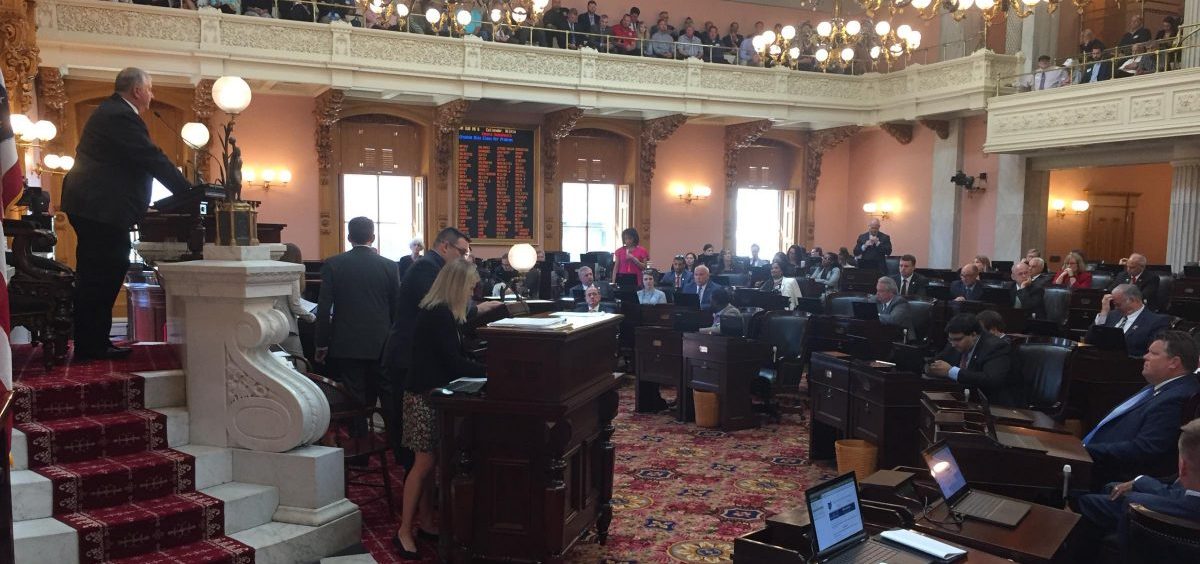News

Lawmakers Pass Blockbuster Bill Overhauling Energy Policy In Favor Of Nuclear, Coal
By: Andy Chow | Statehouse News Bureau
Posted on:
The Ohio House has voted in favor of the sweeping energy bill, HB6, that bails out two nuclear power plants through $150 million in ratepayer subsidies.
The comprehensive bill also sets new coal subsidies, allots credits for solar, weakens renewable energy requirements, and eliminates energy efficiency programs.
Supporters have said the subsidies are needed to save more than 4,000 primary and secondary jobs at FirstEnergy Solutions’ two nuclear plants, Davis-Besse and Perry. The argument was also made that nuclear provides about 15% of the state’s energy and that it’s the largest non-carbon emitting energy source in Ohio.
“This bill saves money, preserves jobs, and protects Ohio’s environment,” Rep. Jamie Callender (R-Concord), said on the House floor before the vote to concur with Senate changes.
The plan would create an $0.85 charge on monthly electric bills. That, along with increased charges for commercial and industrial users, would generate $150 million a year for the nuclear plants. Another $20 million would go towards existing solar farms.
However, opponents stand against the provisions that offset rate increases by lowering requirements for renewable energy use and ends programs that achieve energy efficiency.
“If this bill passes, solar and wind’s presence will not strengthen and will not grow,” says Rep. Sedrick Denson (D-Cincinnati).
FirstEnergy Solutions announced in 2018 that it was filing for bankruptcy and had to close its two nuclear power plants unless policymakers granted subsidies. Some opponents of the bill question that claim.
The bill allows utilities to also charge ratepayers up to $1.50 a month to subsidize Ohio Valley Electric Corporation (OVEC) coal plants, Kyger Creek (Gallia County) and Clifty Creek (Madison, IN).
The policies for renewable energy and energy efficiency standards have been in place since the Ohio General Assembly approved them in 2008 with a bipartisan vote. Utilities have reported to the Public Utilities Commission of Ohio that the energy efficiency programs have helped save about $5 billion in the past ten years for ratepayers.
With the House vote, the bill now goes to Gov. Mike DeWine who has said he would sign the bill. DeWine says the bill helps save jobs and keeps Ohio’s largest source of non-carbon emitting energy online.

